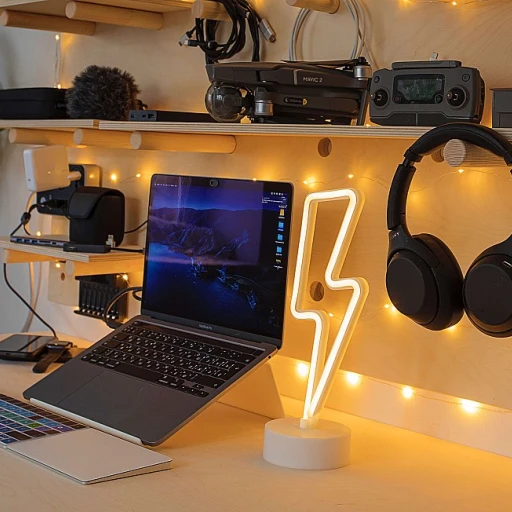
Understanding what makes a design impactful
Key Elements That Capture Attention
Creating an impactful design for social media starts with understanding what truly grabs attention. In a crowded digital landscape, users scroll quickly, making it essential for your visuals to stand out immediately. Impactful design is not just about looking good—it’s about communicating a message clearly and memorably.
Several factors contribute to this effect:
- Clarity: Designs that communicate the core message at a glance are more likely to engage viewers. Avoid clutter and focus on what matters most.
- Consistency: Using a consistent style and color palette helps reinforce brand recognition across different posts and platforms.
- Emotional Connection: Visuals that evoke emotion or curiosity tend to be more memorable and shareable.
Why Context Matters in Social Media Design
Each social media platform has its own audience behaviors and technical constraints. What works on one platform may not be as effective on another. For example, Instagram prioritizes visual storytelling, while LinkedIn may require a more professional approach. Understanding these nuances allows designers to tailor their strategies for maximum impact.
Additionally, impactful design is not just about aesthetics. It’s about how visuals support the overall communication goals, whether that’s driving engagement, building community, or promoting a product part. This balance between form and function is explored further in the next section.
For a deeper dive into how impactful design can shape user perception and engagement, check out this comprehensive look at pop insights in design.
Balancing aesthetics and functionality
Finding the Sweet Spot Between Beauty and Usability
Designing for social media is not just about making things look attractive. The real challenge lies in creating visuals that are both aesthetically pleasing and highly functional. A design that looks stunning but confuses the viewer or makes navigation difficult will not achieve its purpose. When planning your next post or campaign, consider these essential aspects:- Clarity of Message: Every element should support the main message. Avoid clutter and ensure that the viewer immediately understands the intent.
- Consistency: Use a cohesive color palette and style across your visuals. This builds brand recognition and trust.
- Accessibility: Make sure your design is easy to read and interact with, even on small screens. Contrast, font size, and spacing all play a role here.
- Functionality: Interactive elements, such as buttons or links, should be clearly visible and intuitive to use. Test your design on different devices to ensure a seamless experience.
The role of color psychology in impactful design
How Color Choices Influence Perception and Engagement
Color psychology is a cornerstone of impactful design, especially on social media where attention spans are short and competition is fierce. The colors you select do more than just decorate your visuals—they shape how users feel, what they remember, and even how they act. Understanding this dynamic is essential for any designer aiming to create memorable and effective content.
- Emotional Response: Colors evoke emotions. For instance, blue often communicates trust and calm, while red can signal urgency or excitement. Aligning your color palette with your message ensures your audience feels what you intend.
- Brand Consistency: Consistent use of color builds brand recognition. When your audience sees your signature colors, they instantly connect the content to your brand, reinforcing your identity across platforms.
- Accessibility: Consider contrast and color combinations to make your designs accessible to everyone, including those with visual impairments. This not only broadens your reach but also demonstrates inclusivity and professionalism.
Integrating color psychology with other design elements, such as typography and visual hierarchy, amplifies the overall impact. For example, pairing bold colors with clear, readable fonts can guide users’ attention and improve message retention. If you want to explore how these principles are applied in practice, this in-depth look at the role of a graphic designer in modern design offers valuable insights.
Ultimately, thoughtful color choices are not just about aesthetics—they are a strategic tool that supports your design goals and enhances user engagement on social media.
Typography: more than just choosing a font
Typography as a Communication Tool
Typography is more than just picking a font for your social media visuals. It shapes how your message is received and understood. The right typeface can reinforce your brand’s personality, while poor choices can undermine even the most creative layouts. When aiming for a design percutant, consider how typography interacts with other elements like color and composition.
Key Factors in Choosing and Using Type
- Legibility: Your audience should be able to read your message at a glance, especially on mobile devices. Avoid overly decorative fonts for body text and ensure sufficient contrast between text and background.
- Hierarchy: Use different font sizes, weights, or styles to guide the viewer’s eye. Headlines should stand out, while supporting text remains clear but less dominant.
- Consistency: Stick to a limited set of typefaces to maintain visual harmony. Consistent typography supports brand recognition and makes your content feel cohesive.
- Alignment: Proper alignment creates order and structure. Left-aligned text is usually easiest to read, but centered or right-aligned text can be effective for emphasis in small doses.
Typography and Emotional Impact
Just as color psychology influences perception, typography also triggers emotional responses. For example, sans-serif fonts often feel modern and clean, while serif fonts can evoke tradition and reliability. Script fonts may add a personal touch but should be used sparingly to avoid readability issues. The combination of typography and color can amplify your message and help your content stand out in crowded social feeds.
Common Mistakes with Typography
- Using too many fonts, which creates visual clutter
- Ignoring spacing (kerning and leading), making text hard to read
- Choosing style over function, sacrificing clarity for aesthetics
By treating typography as a core {{ product_part }} of your design strategy, you ensure that your message is not only seen but also understood and remembered. Thoughtful type choices, combined with strong visual hierarchy and color psychology, create a more impactful and engaging social media presence.
Visual hierarchy and composition techniques
Establishing a Clear Visual Path
When designing for social media, guiding the viewer’s eye is essential. Visual hierarchy helps users understand what’s most important at a glance. Start by defining the main message or call-to-action. Use size, color, and placement to make this element stand out. Supporting information should be less prominent but still accessible. This approach ensures your audience quickly grasps the core idea without feeling overwhelmed.
Layering Elements for Depth and Focus
Effective composition relies on layering. Place key elements in the foreground, while background details provide context without distraction. Negative space, or empty space, is just as important as the elements themselves. It gives the design room to breathe and helps each component stand out. This balance between filled and empty areas supports both aesthetics and functionality, reinforcing the principles discussed earlier.
Techniques to Enhance Readability and Engagement
- Contrast: Use contrasting colors and font weights to separate headings from body text.
- Alignment: Align elements consistently to create a sense of order and professionalism.
- Repetition: Repeat visual motifs, such as icons or color accents, to unify the design.
- Proximity: Group related items together to help users make connections quickly.
Applying these composition techniques not only improves clarity but also supports the overall impact of your design. Remember, a well-structured layout makes it easier for viewers to interact with your content and absorb your message.
Common pitfalls and how to avoid them
Frequent Mistakes That Undermine Social Media Design
Even with a solid understanding of impactful design, it’s easy to fall into traps that can weaken your message. Recognizing these pitfalls helps maintain both the visual appeal and the effectiveness of your content across social platforms.
- Overloading Visual Elements: Cramming too many images, icons, or text blocks can overwhelm viewers. Simplicity often leads to stronger engagement, allowing key messages to stand out.
- Ignoring Brand Consistency: Inconsistent use of colors, typography, or logos can confuse your audience and dilute brand recognition. Stick to established guidelines for a cohesive presence.
- Poor Contrast and Readability: Low contrast between text and background, or using decorative fonts excessively, can make content hard to read. Prioritize clarity, especially for mobile users who make up a large portion of social media audiences.
- Neglecting Mobile Optimization: Designs that look great on desktop may not translate well to smaller screens. Always preview your visuals on multiple devices to ensure legibility and impact.
- Forgetting Visual Hierarchy: Without a clear structure, viewers may not know where to focus. Use size, color, and spacing to guide attention to the most important elements, as discussed in previous sections.
How to Avoid These Traps
- Test your designs with real users or colleagues before publishing.
- Review analytics to see which visuals perform best and adjust your approach accordingly.
- Stay updated on current design trends and best practices by following reputable sources and industry blogs.
By keeping these common pitfalls in mind and applying proven strategies, you can ensure your social media visuals remain both attractive and effective, supporting your overall communication goals and enhancing your brand’s credibility.

-large-full.webp)












